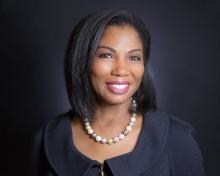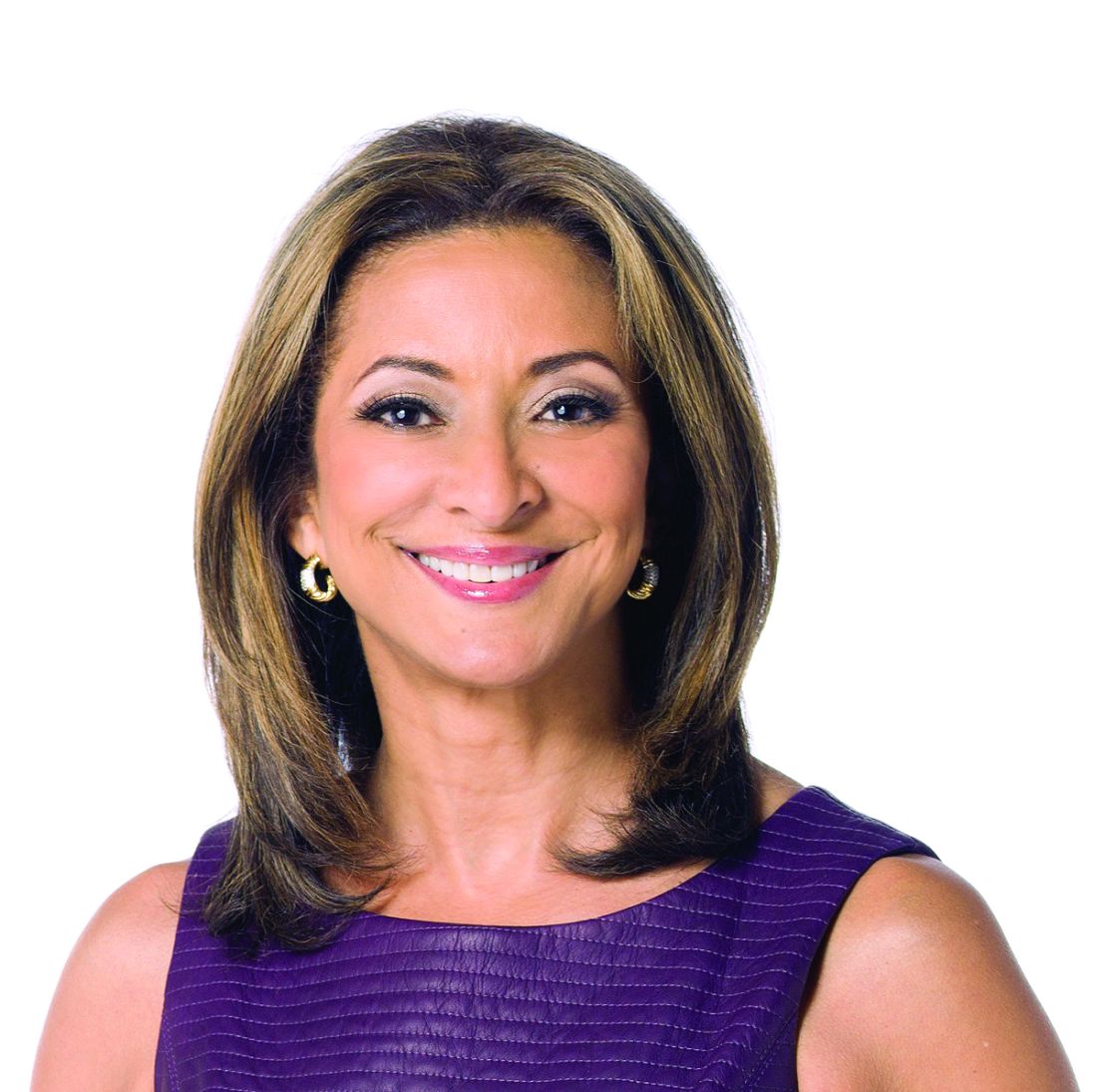User login
LAS VEGAS – in the specialty.
The growing ethnic minority population in the United States “underscores the need for medical education to ensure dermatologists are prepared to provide quality care for patients of diverse racial and ethnic backgrounds,” said Dr. Taylor, the Bernett L. Johnson Jr., MD, Professor, and vice chair for diversity, equity, and inclusion in the department of dermatology at the University of Pennsylvania.
Improving education includes diversifying resource material, she said. A recent study in the Journal of the American Academy of Dermatology showed the representation of skin tones on Google searches for skin conditions was mostly light skin (91.7%), although non-Hispanic Whites account for less than two-thirds (approximately 60%) of the U.S. population, she said. Many people with darker skin tones “are not finding people who look like themselves” when they search skin conditions online, she noted.
The lack of diversity in images occurs not only on Google, “but in our textbooks, which are the foundational resources for our students,” said Nada M. Elbuluk, MD, founder and director of the Skin of Color and Pigmentary Disorders Program at the University of Southern California, Los Angeles. She also established the Dermatology Diversity and Inclusion Program at USC.
The underrepresentation of teaching images, combined with the lack of data on epidemiology and treatment, can translate to poorer quality of care for skin of color patients and contribute to more misdiagnoses in these populations, Dr. Elbuluk emphasized.
Cultural competency and workforce diversity are ongoing issues in dermatology, added Valerie D. Callender, MD, professor of dermatology at Howard University, Washington, and medical director of the Callender Dermatology & Cosmetic Center in Glenn Dale, Md.
“We know that patients of color seek physicians of color,” she said. “We need to target our residents’ interest in dermatology,” and all physicians need to be comfortable with treating patients of all races, she added.
Although more than 13% of Americans are Black, only 3% of dermatologists in the United States are Black, Dr. Callender noted. Similarly, 4.2% of dermatologists in the United States are Hispanic or Latino, but these groups make up more than 18% of the general U.S. population, according to a recent study, she said.
Cheryl M. Burgess, MD, founder and medical director of the Center for Dermatology and Dermatologic Surgery in Washington, presented a roadmap of strategies for improving diversity in dermatology, starting with increasing STEM education at the high school and college levels among all populations and increasing the pipeline of underrepresented students to medical schools.
Then, faculty should work to increase interest in dermatology among underrepresented medical students and increase the numbers of underrepresented medical students in dermatology residency programs, said Dr. Burgess, assistant clinical professor of dermatology at Georgetown University and George Washington University, Washington.
“The more diversity we have in our specialty, the more we learn from each other,” and increased diversity can promote new research questions, said Andrew F. Alexis, MD, vice chair for diversity and inclusion in the department of dermatology and professor of clinical dermatology at Weill Cornell Medicine, New York.
Increasing the diversity of populations in clinical trials is another important strategy to improve diversity in dermatology, he emphasized.
Mentoring is an excellent way to help underrepresented students develop and pursue a career in dermatology, the panelists agreed. Time is precious for everyone, so don’t hesitate to use Zoom and other technology to help connect with mentees, Dr. Burgess advised.
Dr. Taylor added that mentoring doesn’t have to be a huge time commitment, it can be as simple as volunteering once a year at a school career forum. “It is so gratifying to have these young people looking up to you,” she said.
The panelists disclosed relationships with multiple companies, but none were relevant to this panel discussion. MedscapeLive and this news organization are owned by the same parent company.
LAS VEGAS – in the specialty.
The growing ethnic minority population in the United States “underscores the need for medical education to ensure dermatologists are prepared to provide quality care for patients of diverse racial and ethnic backgrounds,” said Dr. Taylor, the Bernett L. Johnson Jr., MD, Professor, and vice chair for diversity, equity, and inclusion in the department of dermatology at the University of Pennsylvania.
Improving education includes diversifying resource material, she said. A recent study in the Journal of the American Academy of Dermatology showed the representation of skin tones on Google searches for skin conditions was mostly light skin (91.7%), although non-Hispanic Whites account for less than two-thirds (approximately 60%) of the U.S. population, she said. Many people with darker skin tones “are not finding people who look like themselves” when they search skin conditions online, she noted.
The lack of diversity in images occurs not only on Google, “but in our textbooks, which are the foundational resources for our students,” said Nada M. Elbuluk, MD, founder and director of the Skin of Color and Pigmentary Disorders Program at the University of Southern California, Los Angeles. She also established the Dermatology Diversity and Inclusion Program at USC.
The underrepresentation of teaching images, combined with the lack of data on epidemiology and treatment, can translate to poorer quality of care for skin of color patients and contribute to more misdiagnoses in these populations, Dr. Elbuluk emphasized.
Cultural competency and workforce diversity are ongoing issues in dermatology, added Valerie D. Callender, MD, professor of dermatology at Howard University, Washington, and medical director of the Callender Dermatology & Cosmetic Center in Glenn Dale, Md.
“We know that patients of color seek physicians of color,” she said. “We need to target our residents’ interest in dermatology,” and all physicians need to be comfortable with treating patients of all races, she added.
Although more than 13% of Americans are Black, only 3% of dermatologists in the United States are Black, Dr. Callender noted. Similarly, 4.2% of dermatologists in the United States are Hispanic or Latino, but these groups make up more than 18% of the general U.S. population, according to a recent study, she said.
Cheryl M. Burgess, MD, founder and medical director of the Center for Dermatology and Dermatologic Surgery in Washington, presented a roadmap of strategies for improving diversity in dermatology, starting with increasing STEM education at the high school and college levels among all populations and increasing the pipeline of underrepresented students to medical schools.
Then, faculty should work to increase interest in dermatology among underrepresented medical students and increase the numbers of underrepresented medical students in dermatology residency programs, said Dr. Burgess, assistant clinical professor of dermatology at Georgetown University and George Washington University, Washington.
“The more diversity we have in our specialty, the more we learn from each other,” and increased diversity can promote new research questions, said Andrew F. Alexis, MD, vice chair for diversity and inclusion in the department of dermatology and professor of clinical dermatology at Weill Cornell Medicine, New York.
Increasing the diversity of populations in clinical trials is another important strategy to improve diversity in dermatology, he emphasized.
Mentoring is an excellent way to help underrepresented students develop and pursue a career in dermatology, the panelists agreed. Time is precious for everyone, so don’t hesitate to use Zoom and other technology to help connect with mentees, Dr. Burgess advised.
Dr. Taylor added that mentoring doesn’t have to be a huge time commitment, it can be as simple as volunteering once a year at a school career forum. “It is so gratifying to have these young people looking up to you,” she said.
The panelists disclosed relationships with multiple companies, but none were relevant to this panel discussion. MedscapeLive and this news organization are owned by the same parent company.
LAS VEGAS – in the specialty.
The growing ethnic minority population in the United States “underscores the need for medical education to ensure dermatologists are prepared to provide quality care for patients of diverse racial and ethnic backgrounds,” said Dr. Taylor, the Bernett L. Johnson Jr., MD, Professor, and vice chair for diversity, equity, and inclusion in the department of dermatology at the University of Pennsylvania.
Improving education includes diversifying resource material, she said. A recent study in the Journal of the American Academy of Dermatology showed the representation of skin tones on Google searches for skin conditions was mostly light skin (91.7%), although non-Hispanic Whites account for less than two-thirds (approximately 60%) of the U.S. population, she said. Many people with darker skin tones “are not finding people who look like themselves” when they search skin conditions online, she noted.
The lack of diversity in images occurs not only on Google, “but in our textbooks, which are the foundational resources for our students,” said Nada M. Elbuluk, MD, founder and director of the Skin of Color and Pigmentary Disorders Program at the University of Southern California, Los Angeles. She also established the Dermatology Diversity and Inclusion Program at USC.
The underrepresentation of teaching images, combined with the lack of data on epidemiology and treatment, can translate to poorer quality of care for skin of color patients and contribute to more misdiagnoses in these populations, Dr. Elbuluk emphasized.
Cultural competency and workforce diversity are ongoing issues in dermatology, added Valerie D. Callender, MD, professor of dermatology at Howard University, Washington, and medical director of the Callender Dermatology & Cosmetic Center in Glenn Dale, Md.
“We know that patients of color seek physicians of color,” she said. “We need to target our residents’ interest in dermatology,” and all physicians need to be comfortable with treating patients of all races, she added.
Although more than 13% of Americans are Black, only 3% of dermatologists in the United States are Black, Dr. Callender noted. Similarly, 4.2% of dermatologists in the United States are Hispanic or Latino, but these groups make up more than 18% of the general U.S. population, according to a recent study, she said.
Cheryl M. Burgess, MD, founder and medical director of the Center for Dermatology and Dermatologic Surgery in Washington, presented a roadmap of strategies for improving diversity in dermatology, starting with increasing STEM education at the high school and college levels among all populations and increasing the pipeline of underrepresented students to medical schools.
Then, faculty should work to increase interest in dermatology among underrepresented medical students and increase the numbers of underrepresented medical students in dermatology residency programs, said Dr. Burgess, assistant clinical professor of dermatology at Georgetown University and George Washington University, Washington.
“The more diversity we have in our specialty, the more we learn from each other,” and increased diversity can promote new research questions, said Andrew F. Alexis, MD, vice chair for diversity and inclusion in the department of dermatology and professor of clinical dermatology at Weill Cornell Medicine, New York.
Increasing the diversity of populations in clinical trials is another important strategy to improve diversity in dermatology, he emphasized.
Mentoring is an excellent way to help underrepresented students develop and pursue a career in dermatology, the panelists agreed. Time is precious for everyone, so don’t hesitate to use Zoom and other technology to help connect with mentees, Dr. Burgess advised.
Dr. Taylor added that mentoring doesn’t have to be a huge time commitment, it can be as simple as volunteering once a year at a school career forum. “It is so gratifying to have these young people looking up to you,” she said.
The panelists disclosed relationships with multiple companies, but none were relevant to this panel discussion. MedscapeLive and this news organization are owned by the same parent company.
AT INNOVATIONS IN DERMATOLOGY




